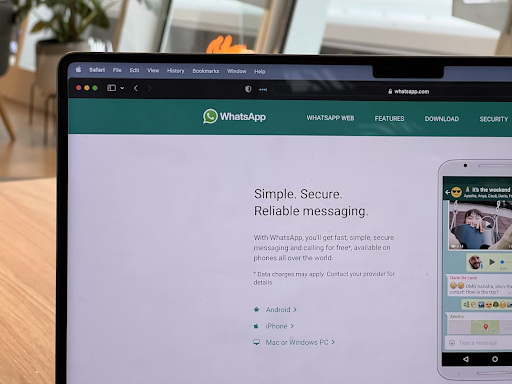Snapchat didn’t just create a new way to send messages — it rewired how we think about online conversations. Quick snaps, playful filters, and messages that vanish like they were never there… it all felt fresh. Almost rebellious. No wonder so many other platforms rushed to capture that same magic. Some did it with their own spin; others outright borrowed the recipe and added extra seasoning.
These days, whether you’re swapping weekend stories or sending a fleeting “you up?” at midnight, there’s no shortage of choices. Telegram, Facebook, Instagram, SnapChat, and other apps like Snapchat offer that same blend of instant fun and short-lived privacy. But which ones actually nail the vibe without feeling like a knockoff? Let’s unpack that.
Why Snapchat’s Style Stuck Around
Here’s the thing — the core of Snapchat’s charm wasn’t just the filters or streaks. It was the feeling that you could be silly, imperfect, even a little impulsive… and it wouldn’t haunt your digital footprint forever. Remember Polaroid photos? You’d snap one, laugh at how awkward it looked, and pass it around until the edges curled. Snapchat brought that energy into the smartphone age.
There’s also something to be said for the way it blends casual and personal. Stories aren’t permanent, but they’re not exactly private either. They live in that sweet spot between texting a friend and posting to your feed — fleeting, but still worth watching.
The Big Players Who Borrowed (and Tweaked) the Formula
Snapchat may have set the stage, but it didn’t get to keep the spotlight alone. Here’s how the big platforms built their own “Snapchat-style” toolkits.
Instagram
Instagram’s “Stories” might be the most obvious homage. They expire in 24 hours, they’re easy to reply to, and they’ve got a buffet of filters, GIFs, and stickers. Reels added the viral edge, and now disappearing DMs are part of the package. If you’re already scrolling your feed, it’s effortless to pop into Stories for a quick peek at someone’s breakfast or beach trip.
Facebook Messenger
Messenger’s “Vanish Mode” lets you send messages that disappear once they’ve been seen. It’s not just text, either — you can send photos, voice notes, and goofy stickers. Plus, AR effects make video chats feel like you’re inside a Snapchat lens (without actually opening Snapchat).
Telegram
Privacy is Telegram’s calling card. Its “Secret Chats” feature gives you end-to-end encryption and a self-destruct timer. You can send voice messages, videos, and even files that vanish after a set time. It’s got a more serious tone than Snapchat, but still allows for creative, quick exchanges.
WhatsApp
WhatsApp Status is essentially Stories in a green bubble. You get 24 hours before your photos or videos vanish. The app also introduced disappearing messages and view-once media, making private chats feel more in-the-moment.
Smaller Apps, Bigger Personality
While the giants dominate the scene, smaller apps often experiment more boldly.
Signal focuses on rock-solid privacy, offering disappearing messages across all chat types. It’s less flashy but perfect for people who prioritize security.
Discord, known for gaming communities, has added temporary voice channels and short-lived media sharing. It’s a different crowd, but the same appetite for ephemeral fun.
Some platforms like Marco Polo mix video messaging with Snapchat-style features, letting you send short clips that can be deleted later. And while not as mainstream, niche apps catering to teens or hobbyist groups keep reinventing disappearing content.
The Double-Edged Sword of Disappearing Messages
Let’s be real — the idea that a message “vanishes” is comforting, but it’s not foolproof. Screenshots, screen recording, and even taking a photo of the screen with another phone are easy workarounds.
It’s also worth noting that some apps promising privacy have faced controversy. The Monkey App, for example, came under fire for safety concerns despite offering Snapchat-like features. That’s why, even when using Telegram, Facebook, Instagram, SnapChat, or other apps like Snapchat, it’s smart to understand the privacy trade-offs before sharing anything sensitive.
Why These Features Keep Us Hooked
AR filters and playful stickers aren’t just for teenagers. There’s a strange joy in sending a friend a picture of your cat wearing a virtual cowboy hat. Disappearing messages turn even the most mundane updates into mini-events — you have to be there now, or you miss it.
And let’s be honest: sometimes a timed message saves you from overthinking. You send it, it’s gone, and you don’t spend the next week cringing over what you said. That instant relief is addictive.
When to Use Which Platform
Choosing where to chat isn’t just about features; it’s about the mood.
- Want to broadcast a fun moment to your whole circle? Instagram Stories or WhatsApp Status works.
- Need a private, encrypted chat with a timer? Telegram or Signal has you covered.
- Looking for playful, face-filter video calls? Facebook Messenger still holds up surprisingly well.
- And if you want the original vibe, well… Snapchat’s still right there.
Sometimes it’s not even about the app’s capabilities — it’s about where your friends actually hang out. A perfectly timed disappearing message isn’t much fun if nobody sees it.
The Future of Ephemeral Chat
It’s not far-fetched to imagine even more interactive disappearing content in the near future. Think VR stories that vanish as soon as you leave the space, or AI-driven filters that respond to your facial expressions in real time.
But one thing’s clear — the appeal of quick, unpolished, and temporary sharing isn’t going anywhere. It’s the digital equivalent of scribbling on a napkin and passing it to a friend, knowing it’ll probably end up crumpled in a pocket by the end of the day.
Final thought: Whether you’re using a global giant like Instagram or a smaller, privacy-first app, the “Snapchat style” is no longer tied to a single brand. It’s a way of communicating — a blend of playfulness, speed, and impermanence — that’s become part of how we connect online. Just remember: even if the message disappears, the impression you leave might not.




